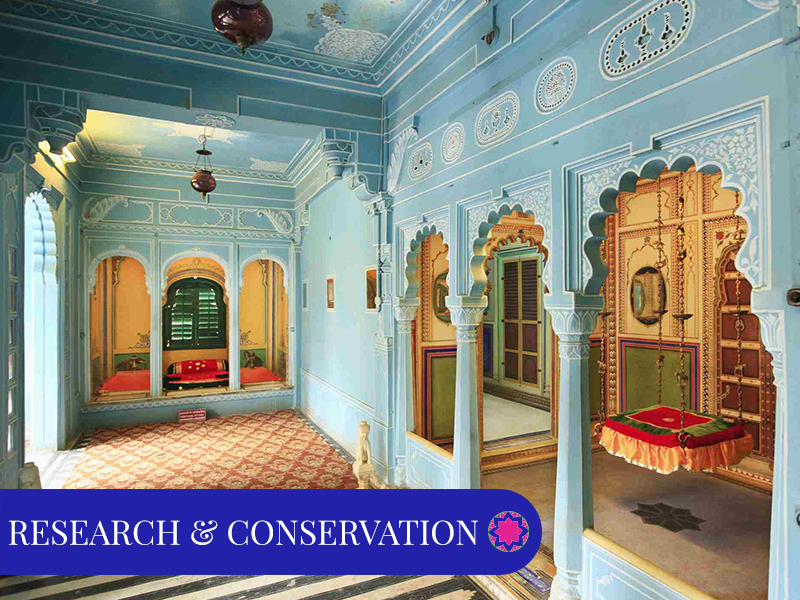

Suraj pol marks the main entrance to the palace complex from the east side opening into the public palace court called the Manek Chowk.Historic findings about the site indicate that this was the main entrance to the Palace even before the construction of the north gate, the Badi Pol. Restoration project added value to the gate byhighlighting it with colors to stand out from the surroundingplain wall with the help of local artist. The importance of this area has been enhanced during the process.
Toran Pol is named so because of its use in the traditional wedding ritual, where the Rajput groom getting married to the Rajput princess would touch the toran(a temporary crown tied on the entrance gate) before entering the Zenana courtyard for the wedding ritual. The gate has been used for this ritual since the 19th century till today.
The Plain façade was enhanced by beautiful floral painting and human figurein traditional attire. The pattern adapted is representation of the local culture and traditions.
Amar Mahal was built in the early 17th century when Rana Amar Singh moved back to Udaipur. This was constructed as a grandiose structure, to shift the rawala; living quarters of the royal ladies' to the south of the main palace. Since Rana Ari Singh's time (1761-1773) to the recent past, this had been used as a treasury for valuables and personal wealth - hence the name bhandar. This is a three storied structure with an interesting juxtaposition of domes adding to the skyline. It was restored in the year 2013 by Shriji Arvind Singh Mewar. Currently, it is the part of museum trail known as the Silver Gallery.
The music gallery is located on first floor of Zenana mahal south wing. Paintings from the Chitram kiBurj show that the spaces in the zenana wings were subdivided, with separate units belongs to each queen. The private palaces of the queens, namely Jash Prakash, Bhupal-Prakash, Radha-Vilas, Brinda-Vilas, Sarvati-Vilas,Amar-Niwas, Rang-Bhawan and Badal-Mahal etc. are spread over different floors of the Zenana Mahal. The area was designed to accommodate the series of new galleries which are now part of the museum route.
A state of the art conservation laboratory has been set up at The City Palace Museum, Udaipur. This laboratory focuses primarily on the conservation of works on paper but has been planned in such a way that other materials can also be handled. It is anticipated that it can be developed into a laboratory that caters to the conservation needs of the entire region and a training centre of international repute.